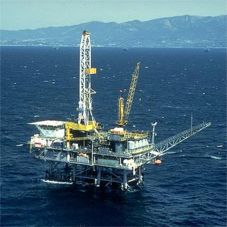Although
some plastics are made from renewable resources, most are made from crude oil.
How sustainable are they?
-
Crude oil, like natural gas and coal, is a non-renewable resource: once we have used them up, they cannot be replaced.
-
Much of the world�s oil already comes from OPEC (Organisation of the Petroleum Exporting Countries - Algeria, Iran, Iraq, Indonesia, Nigeria, Oman, Qatar, Saudi Arabia, United Arab Emirates and Venezuela). From 2008, it is expected that OPEC will have overall control of the world�s oil supplies. Do you think this is wise?
-
Huge tankers, some up to half-a-mile long, are used to transport crude oil. If one of these is involved in an accident, the oil spilt can cause an environmental disaster, contaminating beaches and destroying wildlife.
-
Crude oil is processed in a refinery, where it is separated into different components (fractions) � petrol gas, gasoline, naphtha, kerosine, diesel oil, lubricating oil and a residue that is used to make bitumen for surfacing roads. Most plastics are developed from naphtha. In total, 4% of crude oil is used to make plastics � a small but significant amount.
